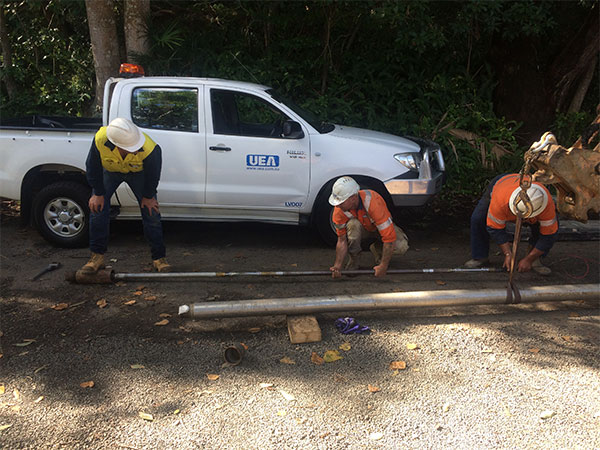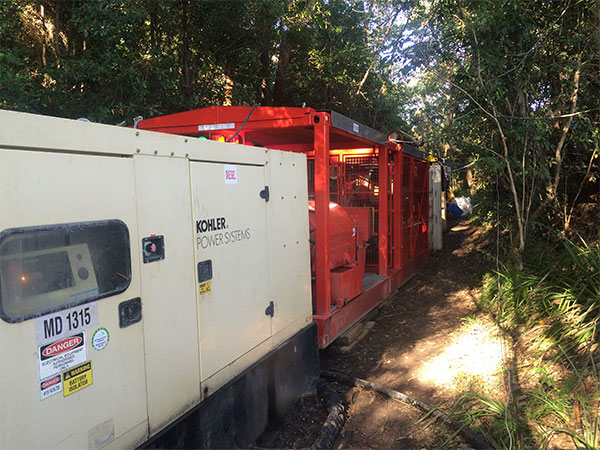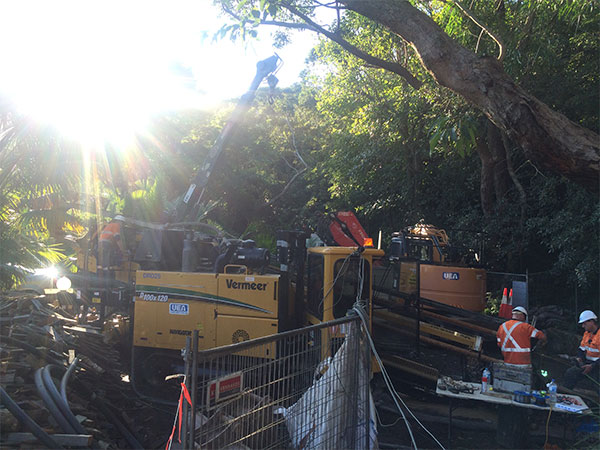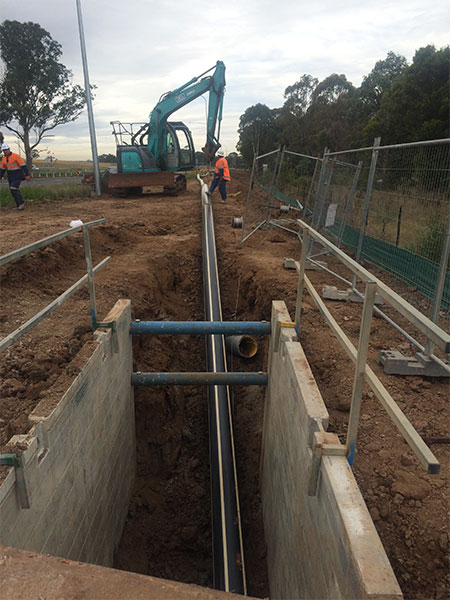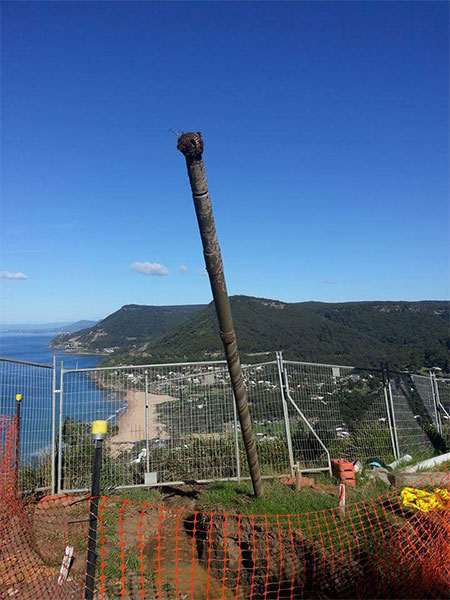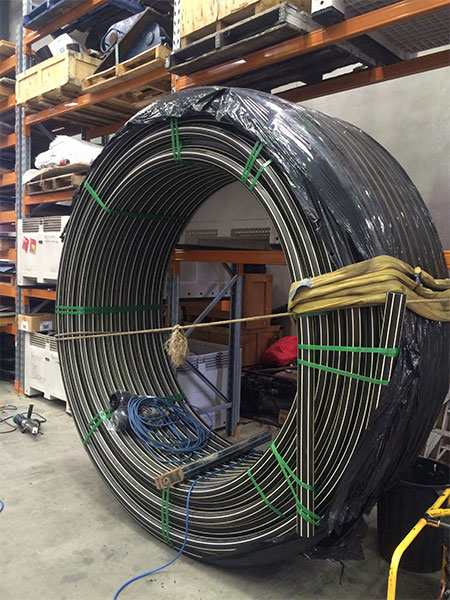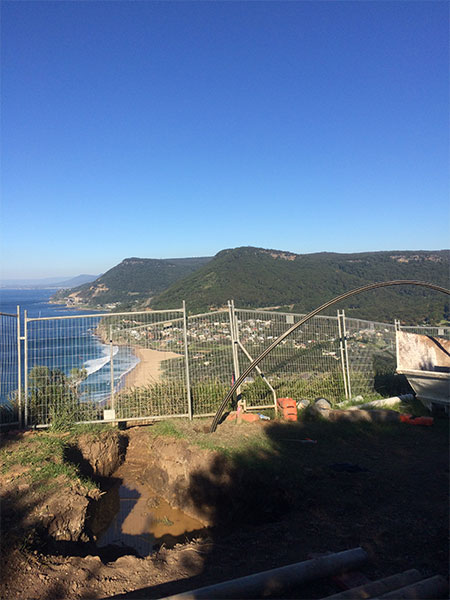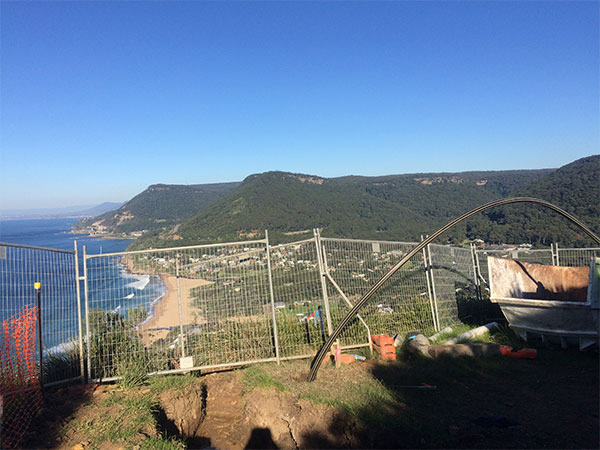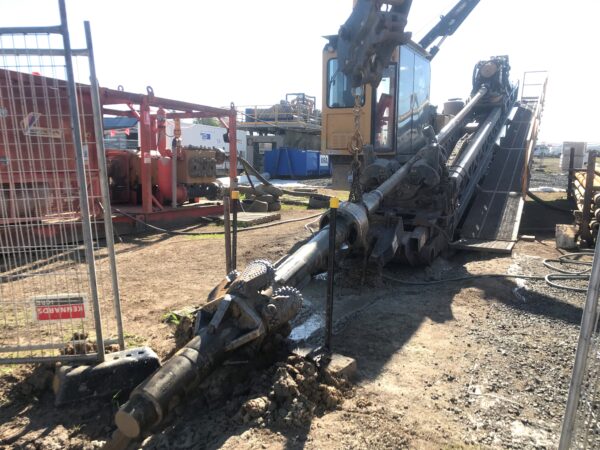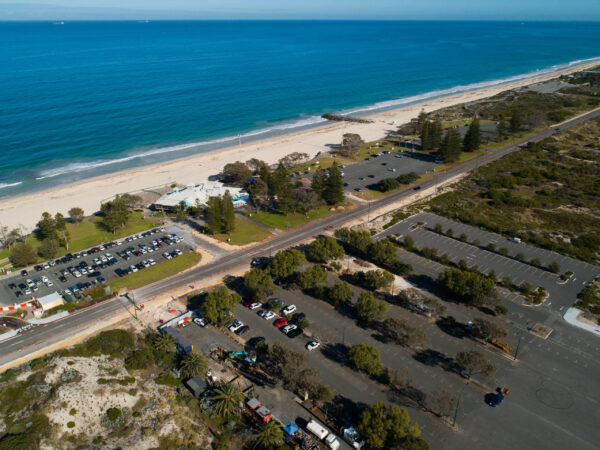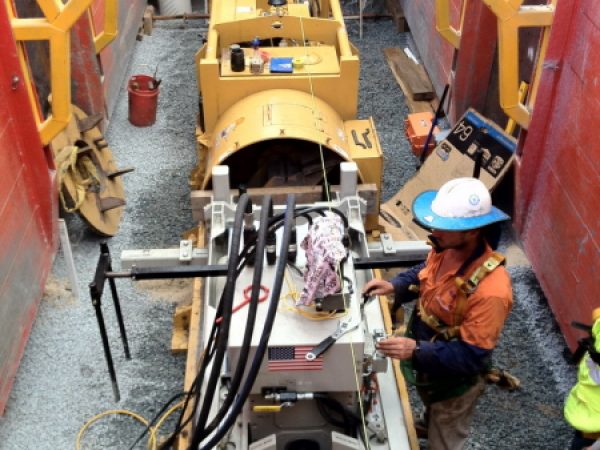Scope of Works
The contract required the design and construction of a sewer pipeline to the new site amenities, including the installation of a HDD bore from the base of the Bald Hill reserve starting in Chellow Den Avenue, through the hillside itself and exiting at the Stanwell Tops lookout point. UEA was contracted to complete the:
- Design of HDD bore profile to accommodate 121 metres of vertical elevation difference
- Drilling fluid design of drilling product to be used during the HDD works
- Supply and installation of 345 metres of DN75 PN25 HDPE
Techniques used
- Utilisation of D100 x 120 Vermeer HDD rig
- Use of specialist support equipment including ultra high pressure mud pump for significant elevation bore construction
- Engineered drilling rig thrust block and procedures to overcome unique and significant thrust pressures associated with bore design
- Steering Engineer employed to track bore path using ParaTrack 2 wireline tracking
Design
The design of a steep elevation bore needed to factor in a range of constraints, including the hydraulic design of pipeline, transverse distance, terrain, ground conditions, geotechnical data, groundwater and drilling products that would allow drilled cuttings to be removed from the bore. UEA, in conjunction with its drilling product specialist Mi Swaco, designed a bore mud plan specifically for this project. It was critical to ensure that drilled cuttings remained suspended long enough to be transported out of the bore hole.
Site ConstrainTs
UEA had to be resourceful whilst completing the works due to the challenging job and limited site access. Major challenges presented throughout the project, including a detailed and lengthy design input to ensure that works could be completed within the historically significant Stanwell railway corridor. The equipment selected to complete the job, including the Vermeer D100x120 drilling rig and DFE 450 drilling fluid recycling system, had a large footprint and posed a significant challenge when mobilising to the entry point. Good pre-planning and numerous site visits, combined with community, client and council consultation, ensured all equipment was mobilised without damage to surrounding heritage or environment and minimal disturbance to residents. Mobilisation plans were created and approved to confirm the sequence and timing of deliveries to maintain existing access and activities.
Tracking the Bore
The bore was designed to transverse through Bald Hill, entering at Chellow Den Avenue, travel through the Bald Hill headland reserve, and exit at the top of the Stanwell Tops iconic lookout – 121 metres higher than the entry point. The Trenchless team needed to track the bore 345 meters through thick, steep bushland as well as reaching 121 metres of vertical elevation and a depth of 45 meters below surface level. UEA therefore could not use conventional tracking methods alone, and employed Highside Steering Services, steering engineer specialists to utilise a combination of walk over and ParaTrack 2 wireline tracking techniques. This allowed for the most cost effective, efficient and accurate means to track the bore.
Pipe Supply
Due to the length of the bore, site constraints at exit, and the need to maintain an internal bead free pipeline, a string out and weld method could not be completed for pipe assembly. As an alternative to traditional methods UEA sourced a specially manufactured 400 metre coil of PN25 75mm HDPE pipe from Perth with the aid of KenKar plastics, specifically for this project. This enabled one continuous pipe pull, more manageable site access and generally a lower risk for the project itself.
Completion
UEA completed the highest elevation HDD known in NSW, reaching 121 metres of vertical elevation over 345 metres of horizontal distance, and with the deepest point reaching 45 metres of vertical depth. Through the skilled and professional operation of the HDD crew and with the assistance of a Steering Engineer, UEA delivered the trenchless works to specification, on time and on budget to the client’s exact requirements.

